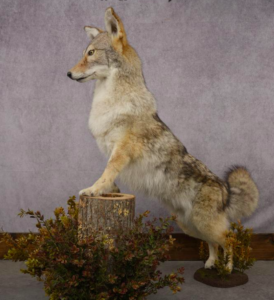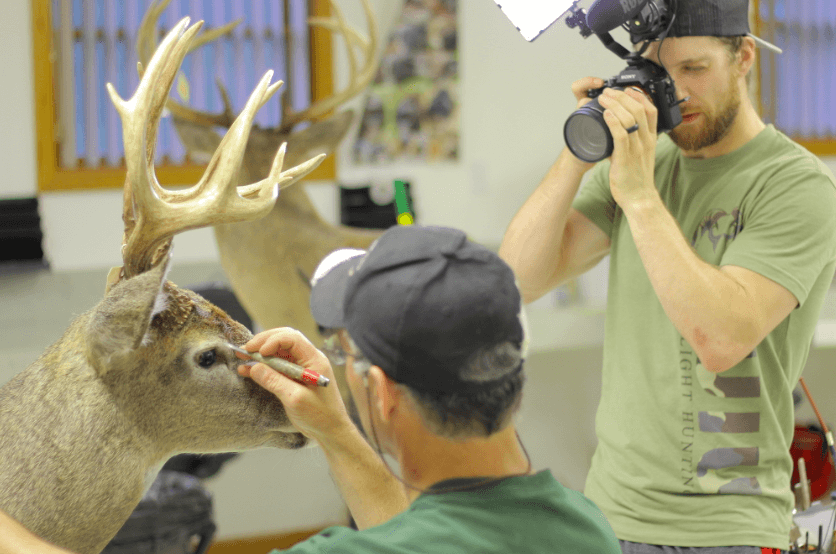
Best Taxidermy Schools.
Few crafts are as interesting as taxidermy when it comes to mixing creativity, science, and a profound passion for the natural world. Taxidermy schools provide a unique chance for fans and aspiring artists to immerse themselves in a centuries-old technique that brings animals back to life in spectacular, lifelike exhibitions. This blog article delves into the intriguing world of taxidermy education, revealing the skills, techniques, and passion that motivate people to perfect the art of conserving nature’s beauty. Join us on a tour into the corridors of taxidermy schools, where art and science flawlessly meet, whether you’re investigating a new artistic career or want to hone your skills.
How to Choose the Best Taxidermy School.
If you want to study the art of taxidermy, you might enrol in a taxidermy school or take classes taught by expert taxidermists. Taxidermy is the preservation and mounting of animals for display, and it demands artistic ability, anatomical understanding, and technical proficiency.
While taxidermy schools and courses differ in terms of offers, curriculum, and location, the following are some typical steps you may take to locate and enrol in a taxidermy programme:
Research Schools and Courses:
Find taxidermy schools or courses in your region or on the internet. You may locate possibilities by using search engines, social media, and specialised platforms. Investigate the school’s or instructor’s reputation, read reviews, and comprehend the program’s offerings.
Content of the course:
Examine the taxidermy program’s curriculum. A variety of taxidermy classes may cover topics including as anatomy, sculpting, mounting procedures, preservation methods, and artistic finishes.
Instructor Qualifications:
Find the credentials and expertise of the teachers. Look for those that have a solid history in taxidermy and teaching.
Location:
Determine if the school or course is only available in person or only online. In-person classes may provide hands-on experience and the opportunity to work with genuine specimens, whilst online courses may provide flexibility but may need you to obtain your own practise materials.
Practical Experience:
Look for programmes that provide an emphasis on hands-on experience. Because taxidermy is a skill-based craft, hands-on experience is essential for learning procedures.
Tools and materials:
Check to see if the course includes materials and tools or if you must purchase them separately. Taxidermy necessitates the use of specialised equipment and supplies, so be sure you have these on hand.
Timetable and duration:
Consider the program’s duration and if it fits your schedule. Some programmes may be brief, while others may be more lengthy.
Cost:
Understand the program’s cost, including tuition, supplies, and any extra costs. Consider the benefit of the teaching and hands-on experience.
Portfolio and Graduates:
Examine the work of past programme students or graduates. A solid portfolio of previous work might be a reliable sign of instructor quality.
Considerations for Legal and Ethical Compliance:
Remember that taxidermy frequently includes working with animal carcasses. Make sure you are aware of any legal and ethical issues that may arise while acquiring materials and doing taxidermy.
Community and networking:
Consider the networking possibilities that the programme may provide. Connecting with other taxidermy students and aficionados may be beneficial for learning and progress in the industry.
Certification:
Upon completion of some programmes, certificates may be awarded. While not necessarily required, a certificate can help potential clients or employers confirm your abilities and expertise.
Keep in mind that taxidermy entails working with animals and their remains, which may be emotionally and morally challenging. It is critical to approach the practise with care for the animals involved.
Best Taxidermy Schools
1- Central Texas School Of Taxidermy

Central Texas School of Taxidermy will teach you all you need to know to have a successful career in Taxidermy.
Their school provides a more personalised approach to training, which they believe is critical while learning taxidermy methods. Their training programme incorporates the most cutting-edge and up-to-date approaches accessible today. During their six-week course, students will get a minimum of 240 hours of specialised taxidermy instruction, including 80 hours during their two-week deer course.
Central Texas School of Taxidermy has established itself as one of the most prestigious and well-known institutions of its kind. They have had questions about their school from all around the United States, as well as Canada, Mexico, the United Kingdom, Hong Kong, Africa, and Japan.
All enrollment applications need a 10% payment. Applications that do not include a deposit will be rejected.
2. The Montana School of Taxidermy
Nobody teaches the three pillars of contemporary taxidermy better than the Montana School of Taxidermy and Tanning. Their taxidermy class is finished; nothing is left out. Students are urged to complete as many mounts as they can. One student completed seven shoulder mounts, ten fish and ten birds, two lifesize mounts, and one rug. Five shoulder mounts and countless fish and birds are mounted by many students in each lesson.
Their revolutionary tanning course, taught both during the major game course and separately in March, offers the most advanced tanning technologies ever discovered and gives students the ability to perform their own in-house tanning.
3- Artistic School of Taxidermy
located in Idaho’s famous Clearwater County. The scenic views help to create a calm study atmosphere. The accommodations are clean and modern, with large rooms. Your enrollment fee includes lodging and meals.
Whether you are a novice or need to fine-tune specific areas, Custom Hands on Training is tailored to each individual’s skill and learning objectives.
There are training options ranging from 3 to 20 days.
Discover what it takes to reproduce animals in their natural habitat. They do not specialise in any one area of taxidermy. When you join Artistic School of Taxidermy, you will learn everything it takes to create a fantastic work, whether it is a turkey in flight, a preening wood duck, or a life-size javelina nibbling on a prickly pear.
4. Lone Leaf Taxidermy School

Lone Leaf Taxidermy School strives to diversify their instruction in order to fit the requirements of each of their pupils. To maximise the hands-on learning experience, each session is kept small, with no more than 7 students. The class must have a minimum of two students to be held.
In each lesson, the most recent taxidermy techniques, cutting-edge approaches, and business ideas are constantly displayed and taught. Students will work in a newly renovated and spacious space equipped with all of the resources necessary to maximise their learning opportunities.
Class size and availability are limited and quickly fill. Please call Lone Leaf Taxidermy School immediately to sign up for one of these informative classes.
All deposits are non-refundable, and courses must be completed.
5- Western Pennsylvania School of Taxidermy

They teach you the skills you need to start your own commercial taxidermy business by using the most up-to-date taxidermy techniques available. As a skilled taxidermist, you will be involved in a career that allows you to set your own high quality standards and do something you enjoy for the rest of your life!
They provide hands-on taxidermy teaching, small classes, and a “do it till it’s right” mindset to ensure excellence. We will not accept subpar craftsmanship due to time constraints or any other cause! They will help you every step of the way till you have finished your job to our satisfaction!
How much does taxidermy school cost?
The cost of taxidermy school can vary greatly based on criteria such as the school’s location, the duration and depth of the programme, the teachers’ repute, the materials given, and the specific curriculum.
Short Workshops or Courses:
Short-term seminars or introductory courses lasting a few days to a week may cost $200 to $1,000 or more. These courses frequently concentrate on certain skills or projects.
Basic Programs:
Longer basic programmes that last a few weeks to a few months might cost anywhere from $1,000 and $5,000. These courses give a more in-depth introduction to taxidermy methods.
Comprehensive Programs:
More extensive programmes that include a wide range of taxidermy methods and abilities might cost $5,000 to $15,000 or more. These programmes might span anything from a few months to a year or more.
Master Classes or Specialty Programs:
Tuition for highly specialised programmes or master workshops offered by prominent taxidermists can range from $10,000 to $20,000 or more.
Online Programmes:
Prices for online taxidermy courses range from roughly $100 to $1,000, depending on the content and length of the course.
To choose a taxidermy school, programme, or workshop that meets your budget and aspirations, conduct research and comparisons. Consider the school’s reputation as well as the teachers’ experience.
Is taxidermy a degree?
Taxidermy is not usually provided as a standard academic degree such as a Bachelor’s, Master’s, or Doctorate. There are, however, specialised training programmes and courses that teach taxidermy art and skills. The duration and complexity of these programmes can vary, and they frequently end in a certificate of completion rather than a formal degree.
These taxidermy programmes are designed to provide students hands-on experience and teaching in the many techniques and abilities required to conserve and mount animals for exhibition. They might cover anatomy, sculpting, skinning, tanning, mounting, and finishing.
While taxidermy is not an academic degree, finishing a quality taxidermy training programme will undoubtedly give you with essential skills and knowledge in this unique sector. Many taxidermists start their careers by enrolling in such programmes and then getting extra experience through practise and mentoring.
If you want to pursue taxidermy as a job or a pastime, you need look into different training programmes and institutions to find one that matches your aims and expectations.
How much do taxidermist make in the US?
Taxidermists’ earnings in the United States can vary greatly depending on factors such as experience, location, skill level, demand for their services, and whether they run their own business or work for someone else. Here’s a broad snapshot of taxidermist earnings as of my most recent update.
Starting Salary: Beginning taxidermists or those with less expertise may earn between $20,000 and $30,000 per year.
Taxidermists with greater experience and expertise might earn a higher salary, ranging from $30,000 to $50,000 or more per year.
Specialized or Established Taxidermists:
Those with a great reputation, specialised abilities (such as duplicating uncommon species), and a large customer base may be able to earn even more. Some experienced and well-established taxidermists may make more than $100,000 per year.
Income might vary greatly depending on the taxidermist’s geographic region. Higher revenue may be possible in places with higher living costs or greater demand for taxidermy services.
Employees vs. Business Owners:
Taxidermists who run their own firms have the ability to earn more money since there is a direct relationship between their labour and their earnings. However, they must also consider business expenditures.
Why do taxidermists take so long?
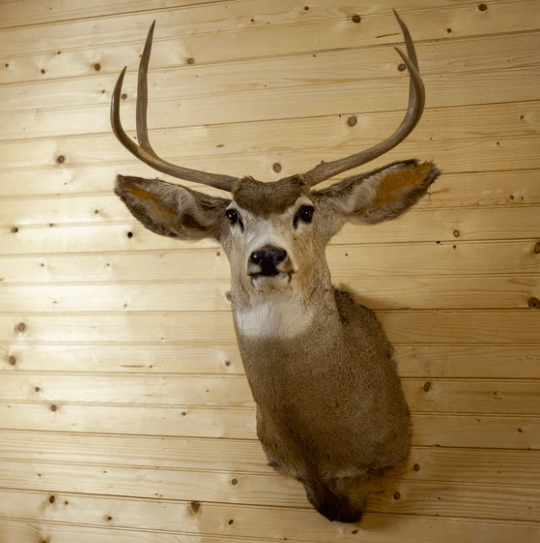
Taxidermy can be a time-consuming operation for a variety of reasons, including:
Detail and Precision:
To create a vivid and accurate image of an animal, painstaking attention to detail and precision are required. To produce a lifelike look, taxidermists must painstakingly sculpt and arrange features such as eyes, ears, and limbs.
Anatomy Complexity:
Taxidermists must properly imitate the anatomical structures of animals. Understanding the positioning and interplay of muscles, bones, and other internal and exterior components is required.
Layered Procedure:
Taxidermy entails a number of phases, each requiring a unique set of skills and procedures. Skinning, tanning, shaping the mannequin (body shape), mounting the hide, and finishing features like fur texture and colouring are all part of the process. Each step adds to the total time necessary.
Curing and drying:
Many preservation processes require materials to dry or cure correctly, which might take time. Tanning skins or drying clay sculptures, for example, cannot be hastened.
Artistic Considerations:
Taxidermists frequently aim to create visually appealing, artistically balanced exhibits. It may take some time to get the desired creative outcome as they meticulously examine and alter the location and look of each part.
Customization:
Each taxidermy job is unique, and the time necessary might vary depending on factors such as the size of the animal, the complexity of its characteristics, and any special customer needs. Customization frequently entails more labour and attention to detail.
The Learning Curve:
Taxidermy requires a learning curve for novices as they build the requisite skills and methods. As they hone their skills, beginning taxidermists may take longer to accomplish jobs.
Demand and Workload:
Professional taxidermists frequently work on many projects at the same time. This might cause them to scatter their time and attention over many jobs, extending the total project duration.
Perfection and quality:
Taxidermists take pleasure in their craft and strive for superior outcomes. This dedication to excellence may need spending extra time refining and polishing details.
Materials and drying times:
Many taxidermy products, including as adhesives and paints, require adequate drying durations for maximum results. When these operations are rushed, the end product’s quality suffers.
Experience and effectiveness:
Taxidermists may become more efficient as they gain experience, but some stages, like as drying or curing, cannot be accelerated regardless of competence.
To summarise, taxidermy is a time-consuming and creative skill that requires meticulous attention to detail, anatomical precision, and patience. The time required for each job is determined on the animal’s intricacy, the intended output, the taxidermist’s skill level, and other variables. The objective is to produce a lifelike and visually attractive portrayal of the animal that captures its essence.
What are the problems with taxidermy?
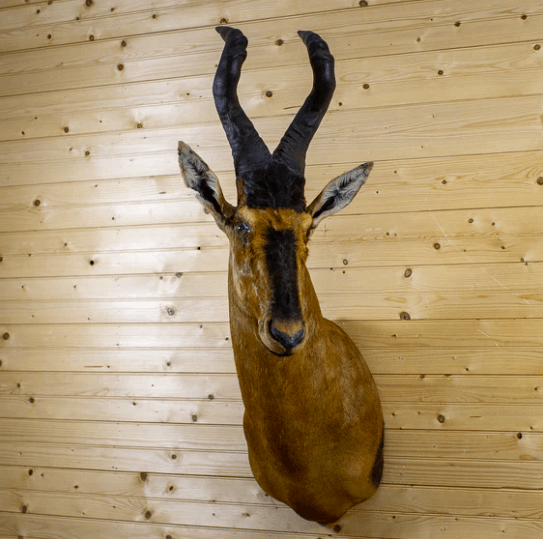
While taxidermy is a popular and well-respected art form, it is not without criticism and obstacles. Here are some of the issues and concerns about taxidermy:
Considerations for Ethical Behaviour:
Taxidermy frequently employs the utilisation of animal remains, which raises ethical concerns concerning the origins of these materials. Some animals may be hunted or killed for taxidermy reasons, which can contribute to animal conservation and cruelty concerns.
Animal Protection:
Concerns have been raised concerning the cruelty of animals that are hunted or trapped for the purpose of taxidermy. The methods used to gather specimens might vary greatly, and not all are humane.
Cultural and Indigenous Concerns:
Animals with cultural or spiritual value to Indigenous tribes may be used in taxidermy. The use of these animals for taxidermy exhibitions might be considered rude and insulting.
Inaccuracies:
Despite taxidermists’ best efforts, completely replicating an animal’s natural look can be difficult. Some taxidermy pieces may not portray the animal’s posture, attitude, or other delicate qualities adequately.
Artistic Interpretation:
Taxidermy requires artistic interpretation, and various taxidermists may have different opinions about how to exhibit an animal. This can result in a range of realism and artistic licence.
Impact on Conservation:
Taxidermy can unintentionally contribute to stresses on already fragile species or ecosystems if animals are obtained through killing or trapping.
Chemical Application:
Taxidermy preservation procedures sometimes entail the use of chemicals, which can be hazardous to both the taxidermist and the environment if not utilised and disposed of appropriately.
Lifespan is limited:
Taxidermy specimens, despite best attempts, are not eternal. They may degrade with time and need maintenance or repair work.
Misconceptions:
Some taxidermy exhibits may promote myths about animal behaviour, ecology, or anatomy. This can lead to widespread misconceptions about the natural world.
Respect and sensitivity:
Viewers’ emotional responses to taxidermy exhibitions might range from adoration to discomfort. It is critical to consider the sentiments and sensitivities of anyone who may come into contact with taxidermy works.
Lack of Regulation:
In some areas, the taxidermy business is not extensively controlled, which might lead to irregularities are some of the problems with Taxidermy.
Do taxidermy animals smell?
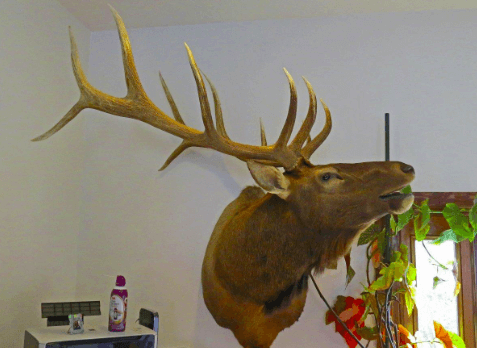
Taxidermy done properly should not have a strong odour. Taxidermy preservation procedures are intended to avoid decomposition and the related odours. Taxidermy animals often do not smell for the following reasons:
Tissue Disposal:
During the taxidermy process, the skin and hair of the animal are removed from the underlying tissue, which includes muscle and organs. Internal organs and tissues that are likely to decompose are removed.
Methods of Preservation:
Taxidermists utilise a variety of preservation procedures to keep decomposition and odour at bay. This sometimes includes tanning the hide, which entails chemically treating it to make it resistant to germs and breakdown.
Drying Techniques:
The hide is properly dried after tanning to remove moisture, which is a crucial contributor in decomposition and odour.
Finishing and sealing:
Taxidermists frequently use sealing chemicals and finishes after mounting the hide onto the sculpted mannequin to protect the hide and establish a barrier against infection and odour.
Display Cases with Airtight Seals:
Airtight display cases can help prevent odours from growing or spreading in situations where taxidermy creatures are shown in a controlled setting, such as museums or private collections.
While well conserved taxidermy specimens should not emit odours, there may be exceptions if the taxidermy was not done correctly or if the materials used in the procedure were of poor quality. If you come across a taxidermy work that has a strange or unpleasant odour, it might be a sign of faulty preservation or other problems.
Related
The Majestic Moose Antler Chandelier, Enchanted Wilds Radiance:
Bear Shoulder Mount Taxidermy. Majestic Adornments:
Best Gemsbok Mounts To Buy: The Captivating World of Gemsbok Mount Taxidermy.

